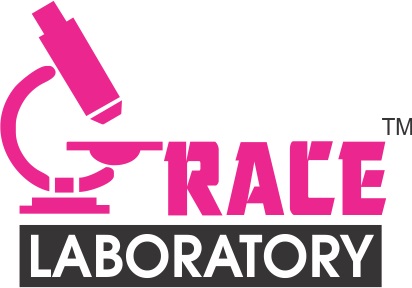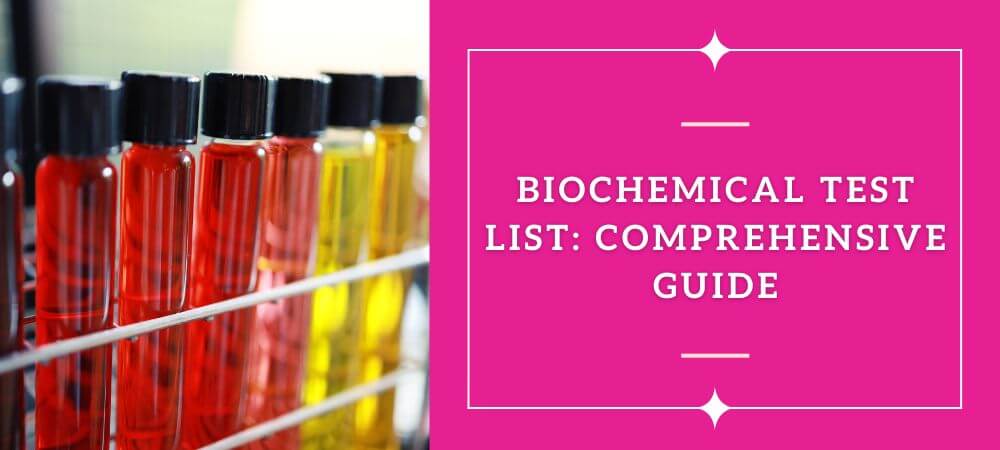Introduction
Biochemical tests play an essential role in medical and biological sciences. These tests are among the most important methods for microbial identification.
This article discusses the procedures of different biochemical tests and provides an exhaustive biochemical test list.
What is a Biochemical Test?
Biochemical tests are laboratory procedures to differentiate various bacterial species by analyzing their biochemical activities.
Biochemical tests frequently detect specific enzymes or metabolic pathways in microorganisms, helping differentiate them from other organisms.
The difference etween protein and fat metabolism, enzyme production, carbohydrate metabolism, and compound utilization ability are the factors that play an essential role in bacterial identification.
A Comprehensive List of Biochemical Tests
Here is a list of the most common biochemical tests, which includes:
Catalase test
- Oxidase test
- Citrate test
- Methyl Red – Voges Proskauer (MR-VP) test
- Triple Sugar Iron Agar test (TSIA)
Biochemical Test Procedures Explained
This section discusses the biochemical test procedures of various biochemical tests.
Catalase Test
The Catalase biochemical test is used to identify organisms that generate an enzyme known as catalase. This enzyme plays a crucial role in neutralizing hydrogen peroxide (H2O2) by splitting it into water (H2O) and oxygen (O2).
The bubbles of oxygen gas indicate the presence of catalase enzymes. This means it is a catalase-positive result.
The following organisms have catalase enzyme:
- Staphylococcus aureus
- Escherichia coli
- Mycobacterium tuberculosis
- Legionella Pneumophila.
Oxidase Test
Oxidase biochemical test helps identify microorganisms with the crucial cytochrome C or cytochrome a3 when undergoing an electron transport chain.
It is frequently used to distinguish oxidase-negative Enterobacteriaceae and oxidase-positive Pseudomonadaceae.
Cytochrome oxidase facilitates the transfer of electrons from the electron transport chain to oxygen, converting it into water. In the oxidase test, a dark purple coloration indicates a positive outcome when an artificial electron donor is oxidized by cytochrome oxidase.
The oxidase-positive organisms include:
- Pseudomonas spp
- Aeromonas spp
- Vibrio spp
- Neisseria gonorrhoeae
Citrate Biochemical Test
Certain organisms rely on citrate as their sole carbon source for metabolic processes. These organisms can be identified through the citrate test.
Simmon’s citrate agar, combined with Bromothymol blue as a pH indicator, produces a beautiful shade of Prussian blue, indicating a positive result.
Methyl Red – Voges Proskauer (MR-VP) Test
The Methyl Red or MR test is a diagnostic tool to identify specific enteric gram-negative rods species.
This test helps determine whether an organism can effectively maintain a stable level of acidity, as certain organisms undergo a process known as mixed acid fermentation.
Methyl red serves as a pH indicator to determine acid levels, displaying red at low pH, indicating a positive outcome, and turning yellow at high pH, indicating a negative result.
On the other hand, Voges Proskauer test is used to identify specific types of organisms, such as enteric gram-negative rods, Aeromonas, and Vibrio, as well as the viridans group of streptococci and staphylococci, at the species level.
While a pink-red hue at the surface is a positive result, a lack of a pink-red color is a negative result.
Triple Sugar Iron Agar Test (TSIA)
The Triple Sugar Iron (TSI) test is a microbiological test that derives its name from its capacity to assess the fermentation capabilities of microorganisms and their capacity to generate hydrogen sulfide.
Carbohydrate fermentation is detected by gas generation and a transition in the pH indicator’s hue from red to yellow.
Conclusion: Biochemical Tests
In conclusion, it is difficult to distinguish one bacterial species from another as their structural differences are not visible even when viewed through a microscope.
Therefore, bacterial identification is made based on differences in their biochemical activities using biochemical tests.





